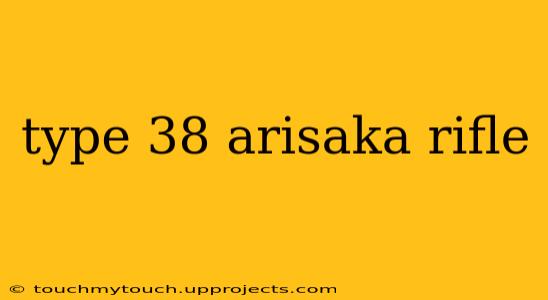The Type 38 Arisaka rifle holds a significant place in military history, serving as the primary infantry rifle of the Imperial Japanese Army (IJA) throughout much of the 20th century. Its distinctive design, robust construction, and widespread use during major conflicts have cemented its status as a collectible and historically important firearm. This article will explore the Type 38 Arisaka in detail, covering its design, variations, combat history, and lasting legacy.
Design and Features of the Type 38 Arisaka
Adopted in 1905, the Type 38 Arisaka was a testament to Japanese industrial capabilities. Based on earlier Arisaka designs, it incorporated features common to many bolt-action rifles of the era, yet possessed unique characteristics that distinguished it. Key features included:
-
Bolt-Action Mechanism: The rifle utilized a five-round internal box magazine, fed by stripper clips. The bolt action, known for its smooth operation, was a crucial element of its reliability. However, the relatively short bolt throw could be a disadvantage in rapid firing situations.
-
6.5x50mm Arisaka Cartridge: This relatively high-velocity cartridge, smaller than many contemporary rounds, offered a flatter trajectory and superior range. Its smaller size contributed to the rifle's relatively light weight and manageable recoil.
-
Mannlicher-Style Magazine: The internal box magazine, a design inspired by the Austrian Mannlicher rifles, provided efficient feeding. However, it was not readily detachable.
-
Sights: The Type 38 featured a tangent rear sight adjustable for range, allowing for accurate fire at distances beyond the capabilities of many other rifles of its time.
-
Bayonet: A distinctive 16-inch long bayonet was standard issue, adding versatility for close-quarters combat.
Variations and Modifications
Throughout its production lifespan, several variations and modifications were introduced to the Type 38 Arisaka. These included changes to the sights, stock materials, and manufacturing processes to improve efficiency and address battlefield feedback. Notable variations include the Type 38 Carbine, a shorter version intended for cavalry and other specialized units.
The Type 38 Arisaka in Combat
The Type 38 saw extensive action in various conflicts, including:
-
Russo-Japanese War (1904-1905): Its debut in this conflict demonstrated its effectiveness against Russian forces, establishing its reputation for accuracy and reliability.
-
World War I (1914-1918): While not directly involved in large-scale European battles, the Type 38 was used in colonial conflicts.
-
Second Sino-Japanese War (1937-1945): The Type 38 became a ubiquitous weapon for the IJA throughout this protracted conflict, encountering varying terrain and combat conditions.
-
World War II (1939-1945): The Type 38 was widely used by Japanese forces in the Pacific Theater, playing a role in many significant battles. Its performance, however, was sometimes criticized for its limited stopping power compared to larger-caliber rifles used by Allied forces.
The Arisaka's Legacy
Despite its age and relatively low stopping power by later standards, the Type 38 Arisaka remains a significant firearm. Its widespread use, robust design, and involvement in key historical conflicts make it a highly sought-after collectible and a fascinating subject of military history study. Collectors and historians continue to research and appreciate the intricacies of this iconic rifle, ensuring its legacy persists.
Conclusion
The Type 38 Arisaka rifle stands as a powerful symbol of a pivotal era in military history. Its design, combat history, and lasting impact on firearm collectors and enthusiasts alike solidify its place as a significant and historically important weapon. Further research into its variations, modifications, and individual experiences of soldiers who used it would only enhance our understanding of this remarkable firearm.
